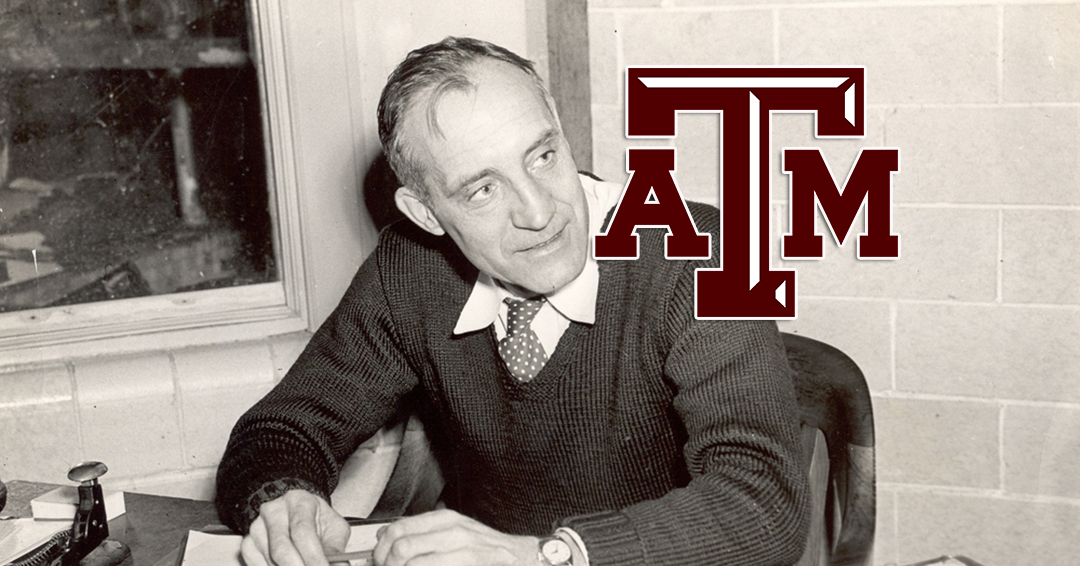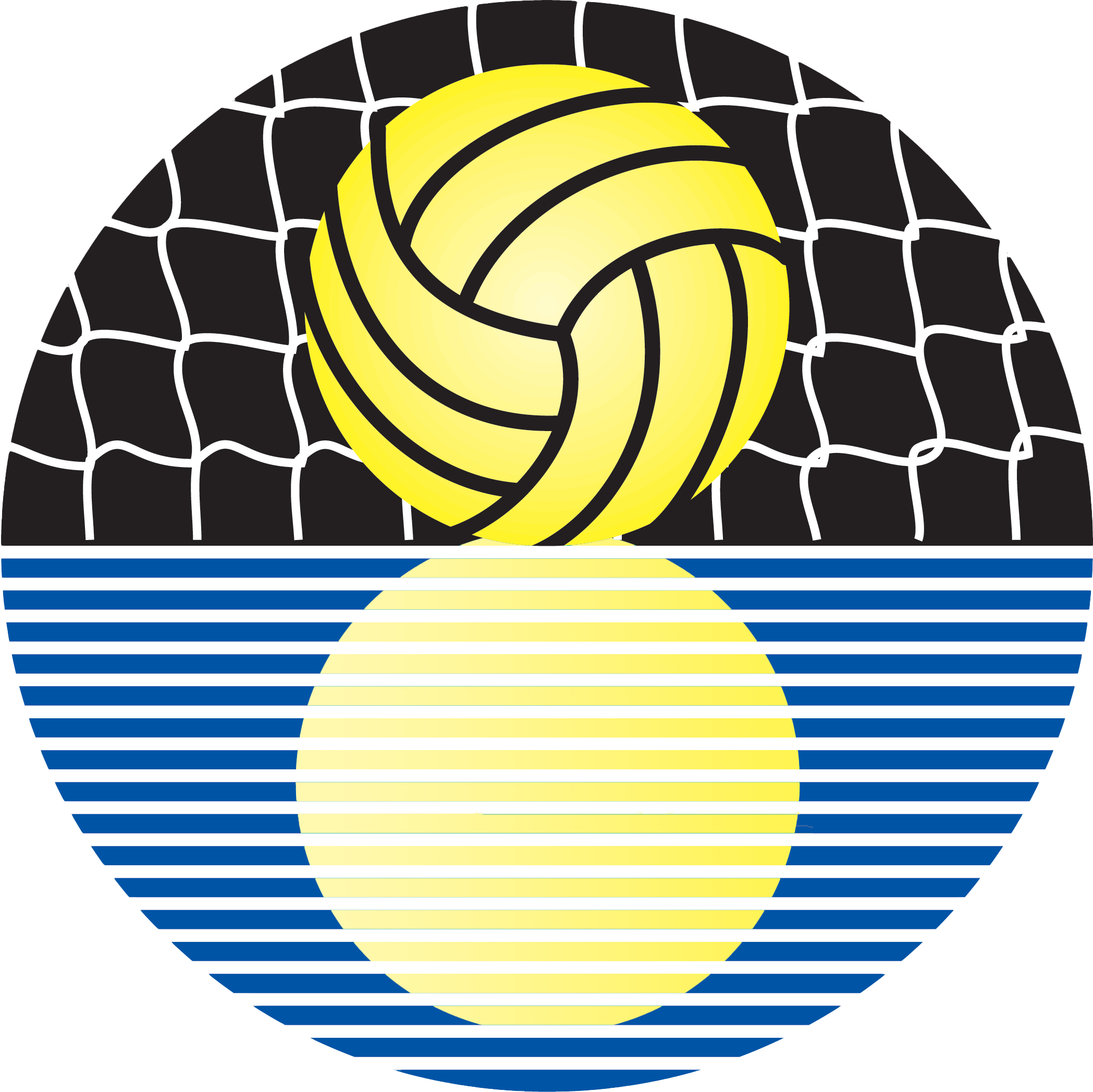BRIDGEPORT, Pa. — For fans of water polo, the recent rise of water polo in the state of Texas is a relatively new occurrence. The Collegiate Water Polo Association (CWPA) has maintained a presence in the state through the collegiate club ranks, but the increase in the number of high school programs and the emergence of Austin College’s varsity men’s and women’s programs have continued an ascension of the sport in the Lone Star State.
Previously, the league highlighted in 2019 the story of University of Texas swimming and water polo/flying disc games founding father Julian “Tex” Robertson. Now 18 months later, the CWPA turns its attention to Texas A&M University and the story of Art Adamson – the longtime coach of the Aggies’ swimming and water polo programs.
Born Arthur Douglas Adamson in England on February 23, 1905, Adamson had an illustrious amateur swimming career which began after his family moved to New Zealand. As a teen, he set long-standing swimming records in the 100-yard (0:57.20), 100-meter (1:03.40), and 220-yard freestyle distances. Further, his water polo career also began in New Zealand, where he played for the Witemata (Auckland) and Pirates (Napier) clubs and in his free time became a renowned deep-sea diver and a champion open water swimmer.
A graduate of Napier High School in New Zealand, he was the National Champion of New Zealand in the 100 freestyle from 1923-to-1925 and qualified for the 1928 Olympics. However, his chance at Olympic glory never occurred as New Zealand elected not to send a team to the games in Amsterdam, the Netherlands. Further, he never competed for the United States in later years as he retained his English citizenship until 1939.
He was married in 1928 and emigrated to the United States. Competing for the Illinois Athletic Club (IAC) from 1928-to-1938,he claimed AAU Junior and Senior National Championship Silver Medals in water polo in 1928, He played for the team with Olympian and future Tarzan actor Johnny Weissmuller.
Further, he was the Texas State, Young Men’s Christian Association (YMCA) and the Texas Amateur Athletic Association (TAAF) 100 freestyle champion and capture the Amateur Athletic Union (AAU) Gulf Association (Southern Texas) 40 and 100 year freestyle championships from 1929-to-1935. Further, he was the Pacific Coast AAU Champion in the 400 freestyle in 1927 while representing the Olympic Club of San Francisco.
However, his most important mark in water polo came at Texas A&M (then known as the Agricultural and Mechanical College of Texas) where he swam and played from 1936-to-1939. Part of the 1939 AAU Senior National Championship team at Texas A&M, Admson never left College Station assuming duties as head coach of the swimming and water polo teams from 1939-to-1970.
During his tenure at Texas A&M, he earned the reputation of being a gruff, demanding coach who was ethical and caring towards his athletes. Even into his old age, he often roamed the pool deck in his swimsuit and robe prepared to challenge any of his swimmers/water polo players to a sprint race. Further, he was known to toss a chair into the pool to spur his swimmers onto faster swimming.
He compiled a 59-8-1 record in water polo during his career, while notching a 95-62 mark in swimming.
A major proponent of aquatics and water safety, he was willing to teach anyone to swim. In the Brazos Valley area around A&M, he started numerous swimming programs. Under his instruction, 15,000 children learned to swim He even initiated a swim test graduation requirement for Texas A&M students which transformed into a required swimming course for students.
In 1941, he was instrumental in the creation of the College Station Parks & Recreation Department which led to his creation of summer league swim teams. His summer leagues, in turn, grew into an AAU year-round swim team. In 1942, he was voted the Texas High School Coach of the Year and was selected for the Texas Interscholastic Swiming Coaches Award in 1964.
A 1956 inductee to the Helms Athletic Foundation Hall of Fame and the Texas Pool Hall of Fame in 1967, he was cited by the American Red Cross for his devotion to aquatics and water polo. More recently, he was inducted into the USA Water Polo Hall of Fame in 1994 and joined the Texas Swimming Hall of Fame in 2004.
He gave back to the sport of water polo as a member of the National Collegiate Athletic Association (NCAA) Rules Committee and oversaw the development of five All-America players – Danny Green, John Harrington, Tetsus Okameta, his son Van Adamson and Richard Hunkler – who would go on to make his own mark as a water polo coach at Slippery Rock University.
The longest-tenured coach in the history of the university, Texas A&M designated him Professor Emeritus in 1970 as he continued teaching swimming at the university. Adamson was involved with his recreational and swimming teams until 1971 and passed away on March 27, 1972.
Although Texas A&M did not make the National Collegiate Athletic Association (NCAA) Championship during his tenure, the Aggies advanced to the NCAA Championship following his passing as Texas A&M appeared in the 1976 and 1978 events. In 1976, Texas A&M fell to to the University of California-Los Angeles (11-3 L), defeated the University of Pittsburgh (21-13 W) and dropped a 12-9 game to the University of Arizona in the Fifth Place game. Two year later, the program fell to the University of California (15-6 L) and upended the U.S. Air Force Academy (11-6 W) to take Seventh Place.
His name lives on in College Station as the Bee Creek Park-Arthur “Art” Adamson Pool was dedicated in 1976. Adamson Pool is a 50 meter, Olympic-size pool with a diving well and a wading pool. In 1992, this facility was renovated with attractions and decorum to transform this municipal pool into a family-oriented waterpark called “Adamson Lagoon”.




